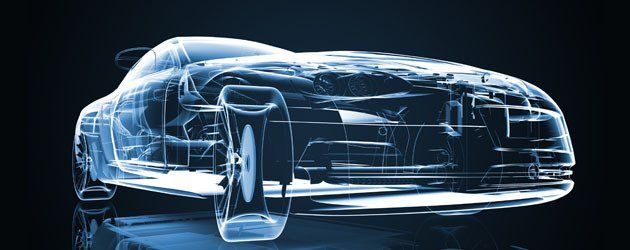E-Stream in Focus Online: Battery modules as energy storage
9. November 2020
Advantages of cylindrical cells over prismatic cells as energy storage devices for the automotive industry

The future belongs to electric mobility. However, German automakers still face major problems with battery modules. At the same time, the EU is threatening to impose heavy penalties this year if the CO2 fleet target is not met. The solution could be offered by a medium-sized German company that works with efficient cylindrical cells, which are also used by the American pioneer Tesla.
The energy turnaround is coming
Politicians and environmental activists have been advocating electromobility for years - but for it to be realized in Germany, efficient technologies are needed. In the next few years, therefore, the degree of innovation in battery technologies will determine whether and to what extent the production and use of electric vehicles can be implemented. Sales of hybrid vehicles alone have increased six-fold this year. At the same time, automakers are reaching their limits in battery production. There are already the first reports of hybrid vehicles being delivered
whose batteries have ignited.
From 2020 onwards, the new EU regulation governing the EU-wide average CO2 emission target for the new car fleet of individual car manufacturers will also come into force. In order to achieve the prescribed value of 95 g/km, European car manufacturers try to increase the share of electric vehicles and thus get their car fleets CO2 neutral. The problem: Most manufacturers in Europe are relying on prismatic battery cells for development. Cylindrical cells, on the other hand, are hardly used in the European industry, even though they significantly outperform prismatic battery cells in several crucial categories. If the new car fleet can't be pushed below the CO2 cap, it faces fines in the billions. German premium manufacturers in particular, with their large high-horsepower vehicles, are likely to run into problems across their fleets if they continue to unilaterally put their trust in what is essentially a battery technology with no prospects.
Cylindrical cells are better energy storage systems.
The U.S. car company Tesla is leading the way: It uses cylindrical cells in its electric vehicles. The German company E-Stream has also long since recognized the many advantages of cylindrical cells. They can achieve a shape efficiency of up to 94 percent - prismatic cells are usually only around 60 percent.
In comparison, in terms of temperature management, safety, performance, flexibility, sustainability and costs, cylindrical cells are the winners. Due to their design, cylindrical cells save a lot of space and at the same time can deliver more power than larger-volume prismatic cells. As a result, even smaller vehicles can achieve dynamic driving performance. Their compact shape results in very good thermal properties, because space-saving thermal management solutions can be installed therefore. E-Stream Energy uses all the advantages of cylindrical cells and has developed an innovative battery storage packaging system.
Future-oriented battery storage technology for the automotive industry
E-Stream has developed an innovative packaging system for cylindrical cells that revolutionizes the energy storage market. In a competitive comparison, the system enables the highest energy density. To achieve this, a lightweight and compact design is used to connect the cylindrical cells. This allows a higher energy density to be achieved, creating more range for electric vehicles and better performance overall.
It is worth highlighting that E-Stream's battery storage systems have a high-voltage capability of up to 1,000 volts and can therefore be charged faster than prismatic cells - from 20 to 80 percent in under 15 minutes. E-Stream's packaging system also offers virtually unlimited flexibility with respect to electrical parameters such as capacity, energy, voltage and power.
The simple design of E-Stream's battery storage modules allows fast and industrializable manufacturing with high cost and efficiency benefits. A forward-looking energy storage technology for the future conversion to electric vehicles.




